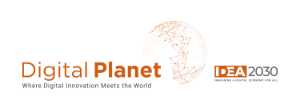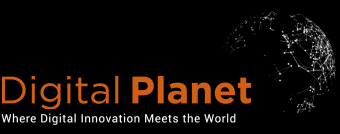Global Digital Inclusion: Progress to Parity Scorecard
Benchmarking 90 economies' progress in closing the gender, rural-urban, and socioeconomic digital divide
Updated September 2022
Summary
We present the Progress to Digital Parity Scorecard—an interactive scorecard that tracks the journey towards realizing the goal of a digital economy for everyone, everywhere. This framework draws on and builds upon the methodology and approach outlined in the Digital Intelligence Index. Our Progress to Digital Parity research compares each of the 90 economies in our study to a truly inclusive digital economy for all—regardless of one’s gender, socioeconomic status, or geographic location. We find that while there was a higher growth rate in internet usage around the globe in 2020, suggesting that the COVID-19 pandemic was indeed an accelerator for getting more people online, this progress was largely uneven. Through applying a parity lens, we find that across all three clusters, the pandemic failed to provide any boost, and much progress remains to be made such that first-level digital access and usage are equal across the three lenses of gender, urban-rural, and socioeconomic. However, Africa, the Middle East, and South Asia saw a bump in progress to gender digital parity during the pandemic, beating the global trend.
Introduction
In 2019, before the COVID-19 pandemic would spark shutdowns worldwide, fostering an even greater reliance on digital technologies, we reached a key milestone: over half of humanity was using the internet. In the subsequent years, as we navigated shutdowns, reopenings, surges, variants, and more, it became increasingly clear that access to the internet not only provided a safe way to work, learn, share, and shop—for some it was a matter of life and death.
Perhaps it should come as no surprise that 2020 saw a pandemic bump—more people got online for the first time that year than in any year past. Over the past few years, we have made steady progress. Today, nearly 2/3 of the global population uses the internet. According to the International Telecommunication Union (ITU), approximately 4.9 billion people—or 63% of the world’s population—were using the internet as of 2021. Since 2019, internet use increased by 17%, with 782 million people estimated to have come online during that period.
While the progress is laudable, it begs the question: what about the 1/3 of global population that remains offline? Across countries and communities, who is unable to access digital technologies and how do we build a more inclusive digital future?
With the goal of expanding inclusion, we shine a light on the inequities of those who are still offline, along with those who are not using digital technologies at the same level as others. In this vein, there exist digital divides through additional lenses—such as gender, geographic location, and socioeconomic status—in which inequities in digital access worsen when comparing the typically excluded groups to their typically included and relatively privileged peers.
To enable policymakers and decision-makers to tackle the extant inequities in digital access and usage, we built this interactive scorecard measuring progress towards achieving digital parity between the typically excluded and typically included using three lenses: gender, rural-urban, and socioeconomic status for 90 economies. Using the latest collected data comparing digital access and usage across these groups from the World Bank’s Global Findex, Euromonitor, and GSMA Intelligence, we calculated digital access and usage in each of the typically excluded groups relative to the typically included. As a result, an economy where only 20% of women are digitally engaged has full progress to gender digital parity if only 20% of men are digitally engaged. Conversely, 70% of women digitally engaged may be less inclusive if 90% or more men are digitally engaged.
To put context behind the state of digital inclusion in an economy, we then imagined a hypothetical fully inclusive digital economy—with perfect parity in digital access and usage between the rich and the poor, men and women, and the rural and urban populations—and used it as a benchmark against which we normalized individual countries’ relative digital parity. This gives policymakers and decision-makers a measure of the extent of digital parity or lack thereof across individual dimensions and a handy sense of the distance to the frontier.
Given our methodology, some countries score above 100% on a given measure. Scoring above 100% means that the typically excluded group has greater digital access and usage than the typically included group in that economy. This is apparent in a select few economies across the gender and rural digital parity measures but is eluded by all economies in the socioeconomic cluster.
It is important to note the level of the digital divide with which our data can accurately measure. On this front, we aim to provide policymakers with a view of digital inclusion on the first level; the most basic level of digital inclusion. For example, the first level of digital inclusion aims to achieve equitable access to and the ability to use the internet for all. This level of digital inclusion is represented by data on electricity access, internet access, broadband access, ownership of phones and laptops, and the ownership of online accounts. While some of our data is tangential to the second level of the digital divide—the ability to use technologies at the same level of literacy—the coverage with which there is available data on the amount of countries we aim to cover on this topic is insufficient at this time.
Our interactive tools begin with a sortable scorecard, ranking 90 economies in socioeconomic and gender digital inclusion and 87 economies in rural digital inclusion from highest to lowest progress to digital parity. Note that three economies—Qatar, Hong Kong, and Singapore—were not included in the rural digital inclusion analysis. This is because these economies have less than 1% of their population living in areas defined as rural, rendering data coverage for these areas on the digital economy insufficient.
How does your country of interest stack up in its progress towards creating an inclusive digital economy?
Explore the progress to digital parity interactive scorecard across the three inclusion dimensions below:
Digital Inclusion: Progress to Parity
An interactive tool benchmarking 90 economies’ progress in closing the digital divide among three measures: gender, rural-urban, and socioeconomic.
Parity Reference Line
% Progress to Digital Parity
Sources: Euromonitor, 2021; Digital Planet, The Fletcher School, Tufts University
Imagining a Digital Economy for All (IDEA) 2030.
The Fletcher School, Tufts University

How to read the charts
Our Progress to Parity interactive and scatterplots below are colored by the percentage of each country’s population using the internet (Euromonitor, 2021). A country colored in dark red has the lowest percentage of its population using the internet, whereas a country colored in dark green has the highest percentage of its population using the internet.
Red-colored countries that approach 100% progress to digital parity have a low percentage of their population using the internet, but the population using the internet does so equitably in the cluster of interest. These countries would do well to expand access to digital technologies in an equitable manner among the excluded populations.
On the other hand, green-colored countries with lower progress to digital parity demonstrate a broad use of the internet by the populace, albeit at inequitable rates in each measure. These countries risk further marginalization of the typically excluded group and concentration of the benefits from a connected society among the included majority.
Finally, the interactive scorecard is created to make comparisons on the country level between income groups and regions. We include dropdown menus for both income groups and regions to allow the user to compare their economy of interest against peers. When the user selects an income group and a region concurrently, it filters on both of those characterizations.
Implications for Action
1. High income economies tend to be the most inclusive of typically marginalized groups for the first level of digital access, but more work must be done to reach 100% parity across the three lenses.
In each of the three lenses, high-income economies have a significant edge in first-level digital inclusion over all other income groups. This is especially true for socioeconomic digital inclusion, in which the median of our sample of high-income economies is 83.6% progress to socioeconomic digital parity, while the median for all other economies is equal to only 47.9%. High-income economies are typically early adopters of new technologies, and as such, first-level digital inclusion (the use of basic digital technologies such as computers and mobile phones, access to broadband, and the use of technologies to make payments) has had more time to diffuse to those more marginalized areas of society.
2. On the aggregate, economies are furthest from closing the socioeconomic digital inclusion gap.
The global median of progress to socioeconomic digital inclusion is only 64.2%, highlighting a significant inequity between how the rich and the poor experience the digital economy throughout the world. This compares to a global median of 76% progress to rural digital parity and 93.3% progress to gender digital parity. Economies in the EU (especially in Scandinavia) are positive outliers in equitable digital access and usage between the rich and poor, owing primarily to relatively higher marginal tax rates for wealthy individuals and higher government spending on public education. As Jackman et. al find, a more robust education leads to higher digital literacy, rounding out Scandinavia’s elite ranking in our progress to socioeconomic digital parity scores.
3. According to our analysis, the gender gap in digital inclusion is the smallest gap of the three, with the median parity level of all 90 economies falling just over 93%. However, lower-middle-income economies have a median of 73% and low-income economies have a median of 52%.
Our calculation of progress to gender digital parity shows that women are closer to matching digital access and usage levels with men than the poor are to the rich or the rural population is to the rest of the population. There are 54 economies that have progress to gender digital parity above 90%, while only 26 economies in the rural lens and 6 economies in the socioeconomic lens have progress to digital parity above the same level. However, significant progress must be made in the developing world to close this gap. For example, the gender gap in smartphone ownership is wider in developing economies than in developed economies. Additionally, UNCTAD finds that the proportion of women using the internet compared to men has marginally declined in many developing economies, underwriting stronger policies to bridge the gender digital inclusion gap in lower-middle-income and low-income economies worldwide. Our analysis shows that while the gender digital divide has not improved much since 2008, Africa, the Middle East, and South Asia saw a bump in progress during the pandemic.
What is the relationship between digital and analog inclusivity across and within countries? Explore the scatterplots below.
Gender Digital Inclusion: Progress to Parity
Performance in our progress to gender digital parity scatterplot is widely cultural. Countries in the Middle East & North Africa, Sub-Saharan Africa, Latin America & Caribbean, and South Asia underperform the global median, on net, while countries in Europe & Central Asia, North America, and East Asia & Pacific tend to outperform the global median.
Median Reference Line
Imagining a Digital Economy for All (IDEA) 2030.
The Fletcher School, Tufts University

Observations
Gender digital inclusion was put to the test on a global scale during the pandemic. Women, who are disproportionately employed in face-to-face service jobs, bore a larger economic weight of pandemic-induced layoffs. Concurrently, the pandemic tested our need to be digitally literate to continue our day-to-day lives, rendering women with lower levels of inclusion before the pandemic at higher risk to fall further behind. As such, the following provides a view of into how included women are in their respective digital economies and labor markets.
Our first scatterplot combines our progress to gender digital parity metric with a measure of workforce parity between men and women. Our X-axis takes labor force participation rate data from 2022 for each of the included economies, as measured by the International Labour Organization (ILO). This tells us: for every man in the labor force in a country, what fraction of women are in the labor force?
Most economies fall into the bottom left and top right quadrants, as is to be expected; higher workforce parity between men and women tends to correlate with higher digital parity between men and women. Countries in the bottom left tend to be clustered in the Middle East, North Africa, South Asia, and South America. Our exemplary sample of countries in the top right is made up primarily from countries in Europe and Central Asia, North America, and a select few East Asia & Pacific countries. The only sub-Saharan African country is Namibia, while the only Middle East & African country is Israel; each country cites equality for women as a right in their respective constitution and declarations of independence.
Implications for Action
Countries in the bottom left could improve their gender digital parity by first creating a level playing field in society for women across education, employment, social, and cultural fronts. These countries should start with equity for women in written law—where, according to the most recent Women, Business & Law report, many of these countries do not have women equal in written law— as a baseline to promoting all-encompassing parity. Second, countries with relatively even digital parity but uneven labor participation among men and women could focus on targeted trainings and education to increase female labor participation. This may be challenging in many economies, however, as economic research finds that cultures with more fixed gender roles tend to have lower long-term labor force participation rates for women.
Second, policymakers must focus on the affordability barrier that limits women from perfect digital parity to men. For example, labor force participation is lower for women than men in all but one of the 90 economies in our analysis. As women participate less than men in the labor market in nearly all of the economies measured, their ability to afford the cost of accessing and using digital technologies is hindered.
Lastly, countries that have high equality in labor force participation yet have low progress to gender digital parity should focus on ensuring equitable digital access and technology among women and men. Many of these economies are clustered in Sub-Saharan Africa, where women have high representation in lower service-level jobs. Over 80% of women in Sub-Saharan Africa working outside of the agricultural sector work in the informal sector. This lowers the need for higher levels of education for these women and, consequently, lowers their digital usage compared to men. To combat this issue, government-led programs such as low-cost courses on digital transformation competency development and free, reliable Wi-Fi for all in public spaces (i.e. public schools, universities, parks and hospitals) could help bridge such gaps. In addition, given that our progress to gender digital parity measure includes many digital personal finance indicators (ratio of women to men with an online bank account, for example), this difference may reflect that men are disproportionately in control of the household’s finances.
Rural Digital Inclusion: Progress to Parity
Globally, people living in urban areas are nearly twice as likely to use internet than those in rural areas. Meanwhile, the advent of widespread remote work in the wake of the COVID-19 pandemic may help to improve rural digital access. As such, the unique context of each country is key to closing the rural-urban digital divide.
Median Reference Line
Sources: World Bank, 2021; Euromonitor, 2021; Digital Planet, The Fletcher School, Tufts University
magining a Digital Economy for All (IDEA) 2030.
The Fletcher School, Tufts University

Observations
To contextualize countries’ progress towards rural digital parity, we compared it against each country’s percent of population living in urban areas as of 2021. We anticipated that countries with a higher percentage of their populations living in urban areas were more likely to have above-median progress to rural digital parity, since there are relatively fewer rural people to reach with digital technologies in those countries. Additionally, urbanized economies tend to yield higher per-capita income, giving governments greater ability to build out digital infrastructure to reach its relatively smaller rural representation. These economies lie in the top right quadrant of our scatterplot. Some stalwarts of rural digital inclusion tend to be economies with smaller land area, such as those in the EU, and Jordan, Bahrain, and Lebanon in the Middle East. It follows, as such, that these economies can more easily reach their entire populations with lower levels of investment in telecommunications infrastructure, since populations are clustered more closely.
On the contrary, economies with smaller urban populations tend to have lower levels of internet usage among their populations and, relatedly, lower progress to rural digital parity. We find that developing economies (those below high-income denomination) tend to have their lowest scores in rural disposable income per rural capita compared to the disposable income of the rest of the economy. According to our calculations, disposable income for persons in rural areas is only 82%, 79.5%, and 73.2% that of non-rural persons for low income, lower-middle-income, and upper-middle-income economies, respectively. With ICT infrastructure more expensive to build out in rural areas than in urban areas, this may render higher relative costs to rural persons than urban persons, keeping developing economies from closing the rural digital divide. Finally, developing economies tend to use e-commerce platforms at a lower rate than developed economies. This may be exasperated by inadequate transportation infrastructure built out to deliver goods to consumers in rural areas.
Implications for Action
Of the 600 million people worldwide living outside of mobile network coverage, 67% are in sub-Saharan Africa, and the percentage of unconnected is disproportionally higher in rural and far-reaching areas. Countries with a large rural population yet low digital parity could do well by investing in increasing digital infrastructure and hardware access for all the population. While digital transformation takes time, countries should explore low bandwidth options to help rural citizens come online. Text message-based financial services are adoption-worthy examples for countries intent on closing the rural-urban digital divide.
Meanwhile, highly urbanized economies that have relatively high shares of information and services industries should pay particular attention to the unevenness in digital access and literacy among their rural populations, making sure they are not falling further behind in access and literacy. The accelerated trend towards remote working in these economies may be a positive driver of a new model of rural development since rural dwellers have a greater opportunity to take on urban work. This may increase incentives for private companies to develop telecommunication infrastructure in rural areas, bridging the gap between rural and urban populations.
Socioeconomic Digital Inclusion: Progress to Parity
Under the veil of rising global income inequality, we find that countries are furthest from bridging the socioeconomic digital divide between the poor and rich. However, European economies (especially Scandinavian economies) are stalwarts for including the poorest in their economies; they provide a benchmark for economies striving for equal digital access between the rich and poor, through a robust marginal tax system combined with inclusive education that fosters equitable digital literacy.
Median Reference Line
Sources: World Bank, 2005 – 2021; Euromonitor, 2021; Digital Planet, The Fletcher School, Tufts University
Imagining a Digital Economy for All (IDEA) 2030.
The Fletcher School, Tufts University

Observations
Finally, to investigate the dynamics of our scores for progress to socioeconomic digital parity, we analyzed the latest Gini Coefficient estimates for our DII countries from the World Bank, a measure of the relative distribution of that country’s wealth. Countries with a higher percentage of income in the hands of a smaller percentage of the population have higher inequality, and thus a higher Gini coefficient. To yield consistency between our scatterplots, we inverted the Gini coefficient on the X-axis such that values on left side of the chart represent higher inequality, and values on the right side of the chart represent lower inequality.
The stalwarts of combined wealth equality and substantial progress to socioeconomic digital parity are primarily in Europe, particularly in Scandinavia. One of the primary reasons for low readings of wealth inequality in this region is high marginal tax rates for wealthy individuals, approaching 70% for some countries. In turn, Scandinavian countries have much higher government revenues as a percent of GDP compared to the rest of the world: Denmark ranked first in the world with tax revenues totaling 34% of its nominal GDP in 2019. Scandinavian countries take those elevated tax revenues and invest in education for all (with Denmark, Norway and Sweden three of the top four high income countries in average government expenditure on education as a percent of GDP since 2008). As Jackman et. al find, a more robust education leads to higher digital literacy, rounding out Scandinavia’s elite ranking in our progress to socioeconomic digital parity scores.
Meanwhile, the bottom left quadrant has high income inequality and low progress to digital parity. Countries in this region are primarily clustered in South America, where relatively low average tax rates have propelled growth in the richest portions of the economies, and sub-Saharan Africa, where economic growth has been driven by sectors with low levels of lower-skilled labor.
Implications for Action
As demonstrated by Scandinavia, investment in accessible education for all is a gateway to creating a digitally literate society. These economies tend to leverage higher tax revenues from high marginal tax rates on the wealthy to even the playing field in digital access and literacy between the poor and rich in their societies.
As further explored in research by Digital Planet, there is an inverse relationship between the growth rate of innovation and progress to socioeconomic digital parity in the top 1/3 of digitally advanced economies in our 90 Digital Intelligence Index economies. As such, policymakers for digitally advanced economies must find the right balance between policies focused on attracting risk capital into the technology sector—which tends to concentrate wealth among the relative few—and attracting and making investments into public goods, such as education and digital skills, to foster a more inclusive digital economy.
As the world begins to emerge from the COVID-19 pandemic, the digital divide is more likely than ever to widen inequality in income and socioeconomic wellbeing in and between countries, particularly in countries with lower progress to socioeconomic digital parity. Governments must actively invest in raising digital literacy and skills of all in order to counteract this trend. Evaluating New Zealand’s Digital Inclusion Blueprint, which prioritizes digital literacy among current non-users of technology, as a benchmark for action is a good place to start.
Progress to Parity Over Time: The Pandemic Drove Higher Rates of Digital Usage but Did Not Drive Higher Levels of Digital Inclusion.
The pandemic was a positive shock to the widespread diffusion of technology throughout the globe. For example, a survey conducted by McKinsey in late 2020 suggests that the response of shelter-from-home policies accelerated the adoption of digital technologies by several years. Further, as mentioned earlier, ITU estimates find that approximately half a billion people came online during the height of the pandemic in 2020, which is the largest increase recorded to date.
However, as the time series charts below illustrate, while steady progress is being made in internet usage across regions and country-level income groupings, the progress to parity across gender, socioeconomic, and urban-rural measures is slow in the best cases, and flatlining or dipping in the worst. One notable exception is the pandemic progress in gender parity seen in sub-Saharan Africa (8% improvement from 2019-2021), the Middle East and North Africa (6%), and South Asia (3%).
While more people are coming online each day, these findings highlight the importance of thoughtful policymaking in fostering more digitally equitable societies for women, the rural population, and the socioeconomically disadvantaged.
Sources: Euromonitor, 2021; Digital Planet, The Fletcher School, Tufts University
Imagining a Digital Economy for All (IDEA) 2030.
The Fletcher School, Tufts University

Methodology
The Progress to Digital Parity research builds upon the methodology followed in the last iteration of the Digital Intelligence Index (DII). The 90 economies included in this comparison across the three areas of digital inclusion—gender, rural, and socioeconomic—are consistent with the economies evaluated in the DII.
The 21 indicators used in Progress to Digital Parity come from three sources—the World Bank’s Global Findex, GSMA Intelligence, and Euromonitor. Each indicator compares the typically excluded group (the poorest 40% for the socioeconomic cluster, women for the gender cluster, and the population living in rural areas for the rural cluster) to the privileged, generally more included group (the richest 60%, men, and the average of the country’s geography) in its respective cluster. The weight of each indicator within the three clusters is determined based on data quality, the strength of collection methods, and centrality to the respective cluster. Any of the 90 economies that had missing data points for those 22 indicators were estimated using the methodology of the DII:
- Where any observations exist for a given economy and indicator, our estimation method first relies on Stineman interpolation to fill in missingness between observed data points. Next, NOCB (next observation carried backward) and LOCF (last observation carried forward) treatments are applied to fill in missingness outside the observed data range.
- Where no observations exist for a given economy and indicator, our estimation method relies on recursive rounds of targeted mean imputation to fill in missing values, whereby missing values are estimated as the average of the sample observations of the most characteristically similar economies for the same year as the missing datapoint. Estimated data points are then given similar interpolation, NOCB, and LOCF treatments.
The parity line that countries are compared against has values for its indicators manually coded such that the poorest 40% has equal digital access and usage to the richest 60%, women have equal digital access and usage to men, and the rural population has equal digital access and usage to the average population.
The fully estimated data for the 90 economies are grouped together with data for the parity line. Normalized values are then created for countries in each of the three clusters. For the final measure of the percent of progress to digital parity, the country scores are compared to the parity line in that cluster. Readings below 100% progress to parity mean that the typically excluded group has lower digital access than the privileged group in that economy. Readings equal to 100% mean that the typically excluded group has equal digital access to the privileged group. Finally, readings above 100% mean that the typically excluded group has greater digital access than the privileged group in that economy. This is apparent in a select few economies across the Gender and Rural digital parity clusters.
Research methodology: Scatterplots
To contextualize the dynamics of parity between the typically excluded and typically privileged in our three measures, we plotted progress to digital parity against three analog variables. Two of these variables—the Gini coefficient for socioeconomic digital parity and percent of the population living in urban areas – were stock data collected from the World Bank. However, we calculated the analog measure used for the gender digital parity scatterplot – female labor force participation parity. The labor force participation rate in a country measures the percentage of the working-age population (aged 15 or older) that is either working or actively searching for work. The International Labour Organization (ILO) disaggregates this data by gender. Using this disaggregated data, Digital Planet divided each country’s most recent female labor force participation rate by that country’s male labor force participation rate.
Research Methodology: Progress to Parity Over Time
We used time series data for each of our 21 data points to calculate the progress to parity across the three lenses of inclusion (gender, rural-urban, and socioeconomic) over time. The value shown in any given year is the median value for the shown income group or region in that year. Income groups are classified using ranges specified for the four income groups in gross national income per capita data by the World Bank. Regions used are also classified by the World Bank.
Quality Assurance
Throughout the imputation, weighting, standardizing, and aggregation processes, we adopted several quality assurances to ensure the validity and robustness of the Progress to Parity values. By deploying different statistical tools throughout the process, including data cleaning, variance analysis, regression analysis, and simulations, we stress-tested the values at multiple levels to produce the most comprehensive and robust numbers possible. Any economy’s scores that jumped out as outliers in the index in the QA process were rigorously checked to make sure that the data in that economy are accurate and robust. This mitigates the chances of systematic errors in the process.
Digital Planet Research Analyst Chris Compton worked on this analysis under the guidance of Bhaskar Chakravorti, Ravi Shankar Chaturvedi, and Christina Filipovic. Student Analysts Mai Nagabayashi, Elena Latzen, and Urvashi Chopra conducted qualitative analysis and literature review to contextualize this research.
Click here to download the interactive Progress to Digital Parity dataset.
This research is a part of the IDEA 2030 initiative, made possible by the generous support from the Mastercard Center for Inclusive Growth.







